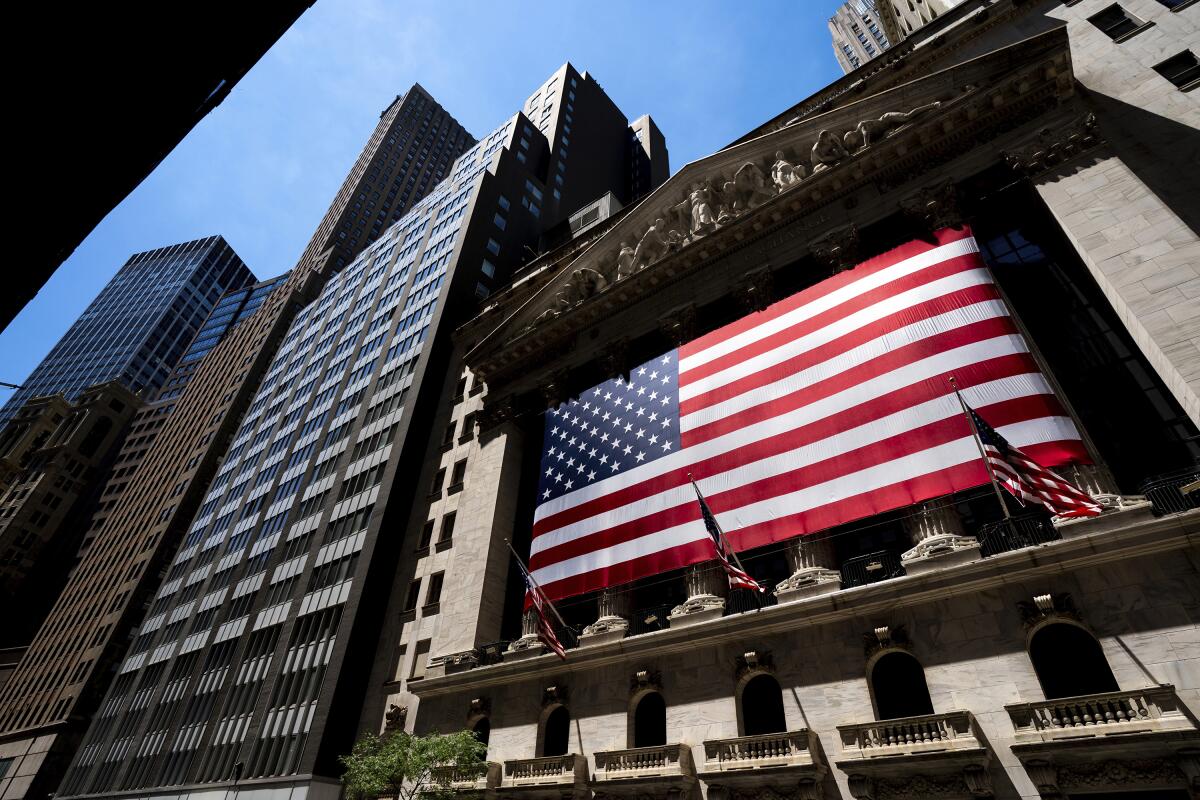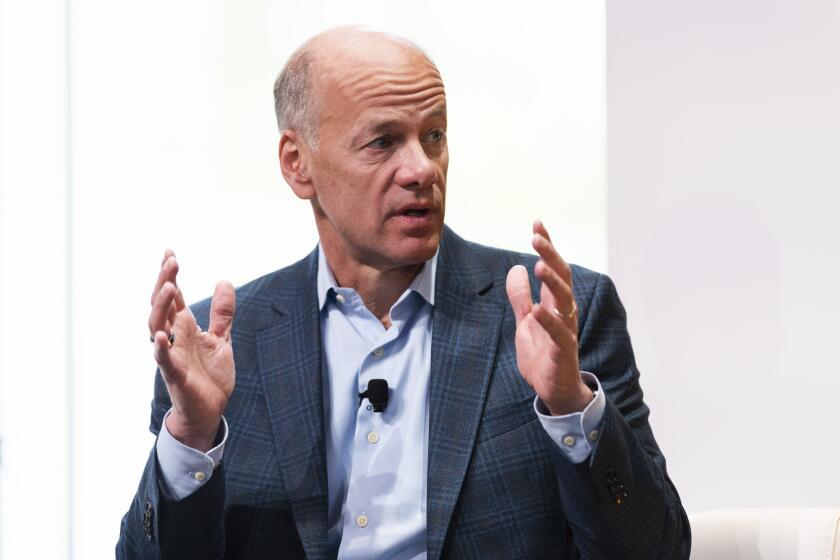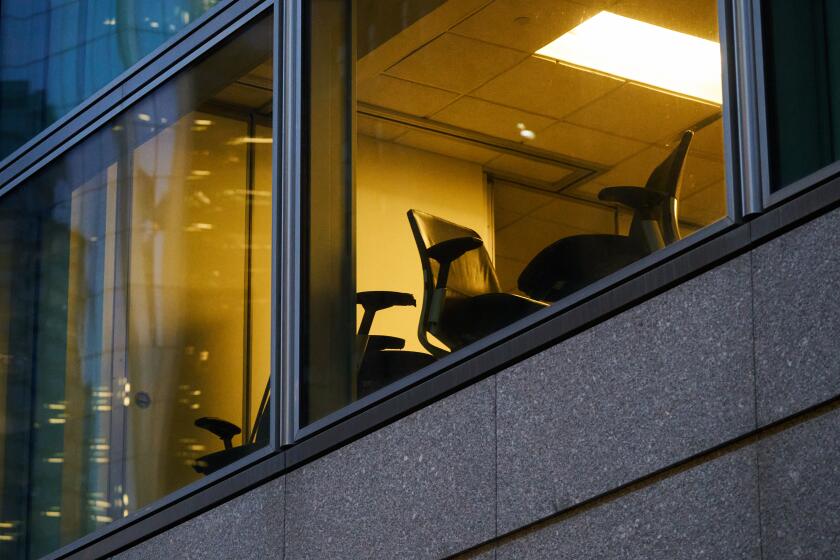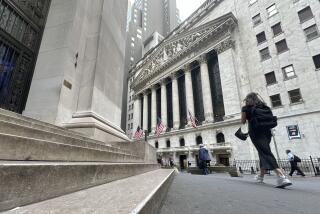Stocks tumble as Wall Street wonders what will break next

Fear rattled Wall Street and stocks tumbled Friday on worries about what’s next to break under the weight of rising interest rates after the biggest U.S. bank failure in nearly 15 years.
The Standard & Poor’s 500 dropped 1.4% to cap its worst week since September. That’s despite a highly anticipated report on Friday showing pay raises for workers are slowing and other signals Wall Street wants to see of cooling pressure on inflation.
The Dow Jones industrial average fell 1.1%, while the Nasdaq composite sank 1.8%.
The sharpest drops in the market were coming from the financial sector, where stocks tanked for a second day.
Regulators took over Silicon Valley Bank in a surprise midday move after shares of its parent company, SVB Financial, plunged more than 60% this week. The company, which served the industry surrounding startup companies, was trying to raise cash to relieve a crunch. Analysts have said it was in a relatively unique situation, but the collapse has still led to concerns that a broader banking crisis could erupt.
SVB Financial Group Chief Executive Greg Becker advised clients of SVB-owned Silicon Valley Bank to “stay calm” amid concern about the bank’s financial position.
Friday’s turmoil came amid what strategists called in a BofA Global Research report “the crashy vibes of March.” Markets have been twitchy recently on worries that high inflation is proving too difficult to drive down, which could force the Federal Reserve to reaccelerate its interest rate increases.
Such hikes can undercut inflation by slowing the economy, but they also drag down prices for stocks and other investments and raise the risk of a recession later on.
Higher rates tend to hit hardest on investments seen as the riskiest and most expensive, such as cryptocurrencies, and are fueling the furor around money-losing Silicon Valley startups.
“There are starting to be cracks that are appearing,” said Brent Schutte, chief investment officer at Northwestern Mutual Wealth. “SVB is a warning for the Fed that their actions are beginning to have an impact.”
The Fed has already raised rates at the fastest pace in decades and made other moves to reverse its tremendous support for the economy during the pandemic. It’s effectively pulling money — liquidity — out of the economy, which can tighten the screws on the system.
“This is a warning sign that the liquidity is draining, and the most vulnerable areas are starting to show it, which tells me the rest of the economy is not too far behind,” Schutte said.
Wall Street already in February gave up on hopes that cuts to interest rates could come later this year. Worries then flared this week that rates are set to go even higher than expected after the Fed said it could reaccelerate the size of its rate hikes.
Friday’s jobs report helped calm those worries, which led to some up-and-down trading. Overall hiring was hotter than expected, which could be a sign that the labor market remains too strong for the Fed’s liking.
But the data also showed a slowdown from January’s jaw-dropping hiring rate. More important for markets, average hourly earnings for workers rose less in February than economists expected.
Millions of workers are still missing from the labor force three years after COVID-19 surfaced. Economists are trying to determine where they went.
That’s crucial for Wall Street because the Fed is focusing on wage growth in particular in its fight against inflation. It worries too-high gains could cause a vicious cycle that worsens inflation, even though raises help workers struggling to keep up with rising prices at the register.
Among other signs of a cooling but still-resilient labor market, the unemployment rate ticked up and the percentage of Americans working or looking for jobs edged up by a tiny bit.
Traders are pulling back on bets the Fed will go back to a hike of 0.50 percentage points later this month. They’re now largely betting on the Fed sticking with a more modest 0.25-point hike, according to CME Group.
Last month, the Fed slowed to that pace after earlier raising rates by 0.50 and 0.75 points.
Such expectations, along with worries about banks, helped send Treasury yields sharply lower.
The yield on the 10-year Treasury, which influences rates for mortgages and other important loans, plunged to 3.69% from 3.91% late Thursday, a sharp move for the bond market.
Some of the sharpest drops on Wall Street came from banking stocks on worries about who else may suffer a cash crunch if interest rates stay higher for longer and customers pull out deposits. That would set up pain because a flight of deposits could force them to sell bonds to raise cash, right as higher interest rates knock down prices for those bonds.
Besides SVB Financial’s struggles, La Jolla-based Silvergate Capital also said this week that it’s voluntarily shutting down its bank. Silvergate served the crypto industry and had warned it could end up “less than well-capitalized.”
Stock losses were heaviest at regional banks. First Republic Bank tumbled 14.8%. It filed a statement with regulators to reiterate its “strong capital and liquidity positions.”
Charles Schwab lost an additional 11.7% after dropping 12.8% on Thursday “as investors stretched for read-throughs” from the SVB crisis, according to analysts at UBS.
Larger banks, which have been stress-tested by regulators after the 2008 financial crisis, held up better. JPMorgan Chase rose 2.5%.
All told, the S&P 500 fell 56.73 points to 3,861.59. The Dow lost 345.22 points to close at 31,909.64, and the Nasdaq dropped 199.47 points to 11,138.89.
AP writers Joe McDonald and Matt Ott contributed to this report.
More to Read
Inside the business of entertainment
The Wide Shot brings you news, analysis and insights on everything from streaming wars to production — and what it all means for the future.
You may occasionally receive promotional content from the Los Angeles Times.












